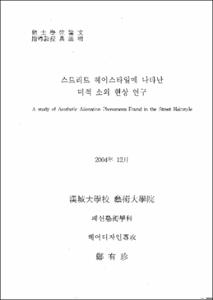스트리트 헤어스타일에 나타난 미적 소외 현상 연구
- Files in This Item:
-
-
Download
 000000556978.pdf
기타 데이터 / 2.28 MB / Adobe PDF
000000556978.pdf
기타 데이터 / 2.28 MB / Adobe PDF
-
Items in Repository are protected by copyright, with all rights reserved, unless otherwise indicated.
 000000556978.pdf
기타 데이터 / 2.28 MB / Adobe PDF
000000556978.pdf
기타 데이터 / 2.28 MB / Adobe PDFItems in Repository are protected by copyright, with all rights reserved, unless otherwise indicated.